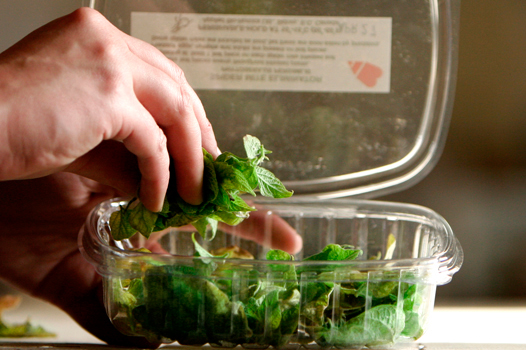
Neoseiulus fallacis
Neoseiulus fallacis (=Amblyseius fallacis), the field mite predator, targets TSSM, Pacific mite, European red mite, Bank’s grass mite. More cold tolerant than other predator mites – can overwinter under snow! Survives low prey level - good for prevention. Packaged in dry carrier (corn grit or vermiculite). Tolerates 48°- 85° F and 50-85% RH. Ideal conditions: 50°-80° F, > 60% RH. Diapauses with light < 16 hours, temp < 54° F. Supplemental light can prevent diapause. 3 per 10 sq ft OR In greenhouses 1 per sq ft or per plant. 2-3 releases a week apart in greenhouses. One release in mint may establish predators for years.
Shipped MTW. No same day orders

Additional Info
- Reproduces at lower temperatures than other predatory mites (P.persimilis)
- Resistant to more pesticides than most biological controls
- Survive in the absence of mite prey by feeding on other small arthropods and pollen
Target: Fallacis strongly prefers tetranychid mites--the European red mite and the twospotted spider mite--in fruit tree orchards and will maintain these below economic thresholds. Also preys on Pacific Mites, Bank's grass mite and cyclamen mite. Will eat 2-16 spider mites per day.
Packaging: Bottles – mite adults in vermiculite or corn grit carrier, easy distribution.
Bean leaves – all life stages on bean leaves, food supply while in transit.
Appearance: Adults are pear-shaped and slightly smaller than the European red mite adult. They are white until they feed when they take on the coloration of their prey (usually red or brown). The eggs are pear shaped, almost transparent, but slightly larger than the round European red mite eggs.
Life Cycle and Fecundity: Mated adult females overwinter in crevices of the tree bark if prey are available in the fall. They emerge as early as bloom, but in reduced numbers due to heavy winter mortality. N. fallacis increases in number rapidly and adults become numerous by July or August. They live about 20 days and lay an average of 40-60 eggs. Eggs are laid along the ribs of the undersides of leaves. They will diapause when in response to shortened days, less than 14 hours of light
Introduction Rates: Fallacis is most effective when applied at the first sign of a mite infestation – careful monitoring is necessary for effective control with predator mites.
Greenhouse crops: Introduce at a rate of 1-5 Fallacis/10 ft2 (m2) to all infested plants.
Use the lower rate for preventative introductions onto mite susceptible plants; use the higher rates if there are established mite populations. They will usually become established in the crop after one introduction, where they remain if mites or pollen are available for food.
Field crops (including berries and mint): Release 7,000 to 10,000/acre when spider mite densities are 0.3/leaf or higher. Spread evenly throughout field using 60-80 release spots, concentrating where mites are worst. Make first release early in spring for control that year and release in summer for control the next season.
See Oregon State University’s release rate calculator for extra information:
http://pnwpest.org/ipm/mcalc.html
General Handling: Overnight storage is possible at 35º and 50º F or until release. Release when temperatures are between 55º and 80º F, preferably not in the middle of the day. Fallacis needs relative humidities of over 50% to survive, particularly in the egg stage. In hot, dry conditions, raise the humidity by watering or misting plants.
Release: For corn/grit vermiculite bottles – gently rotate container to distribute mites and sprinkle contents over misted foliage with highest spider mite densities. If densities are low, then spread as evenly as possible.
For bean leaf product, place or staple leaves as directed for bottles. The predators spread themselves by crawling on plants and tumbling in air currents.
It is susceptible to the fungicide Benlate, carbamate, and both synthetic
and natural pyrethroids which leave a long lasting residue. Overuse of mist-applied sulfur can suppress predator reproduction and reduce effectiveness. Check with supplier with compatibility questions.
IPM Strategy: The habit of N. fallacis to overwinter in crevices can be used to advantage in the early spring with a pre-bloom horticultural oil application. This greatly reduces the number of European red mite eggs while not affecting predatory mite populations. When humidity can be maintained above 60%, use in combination with the mite
predatory midge Feltiella acarisuga. When 70% humidity and 72ºF can be maintained, use in combination with P. persimilis. In drier conditions, use with Stethorus punctum ladybeetle.
Adapted From
http://www.nysaes.cornell.edu/ent/biocontrol/predators/neofall.html Copyright is held by Cornell University.
Kain, D. and Nyrop, J. March 1995. Predatory Mites. Insect Identification Fact Sheet No. 23. Cooperative Extension,
Cornell University, Ithaca, NY.
Helle, W. and Sabelis, M.W. (Eds.) (1985) Spider mites: Their Biology, Natural Enemies and Control. Vol. 1B. Elsevier,
Amsterdam. 458 pp.
